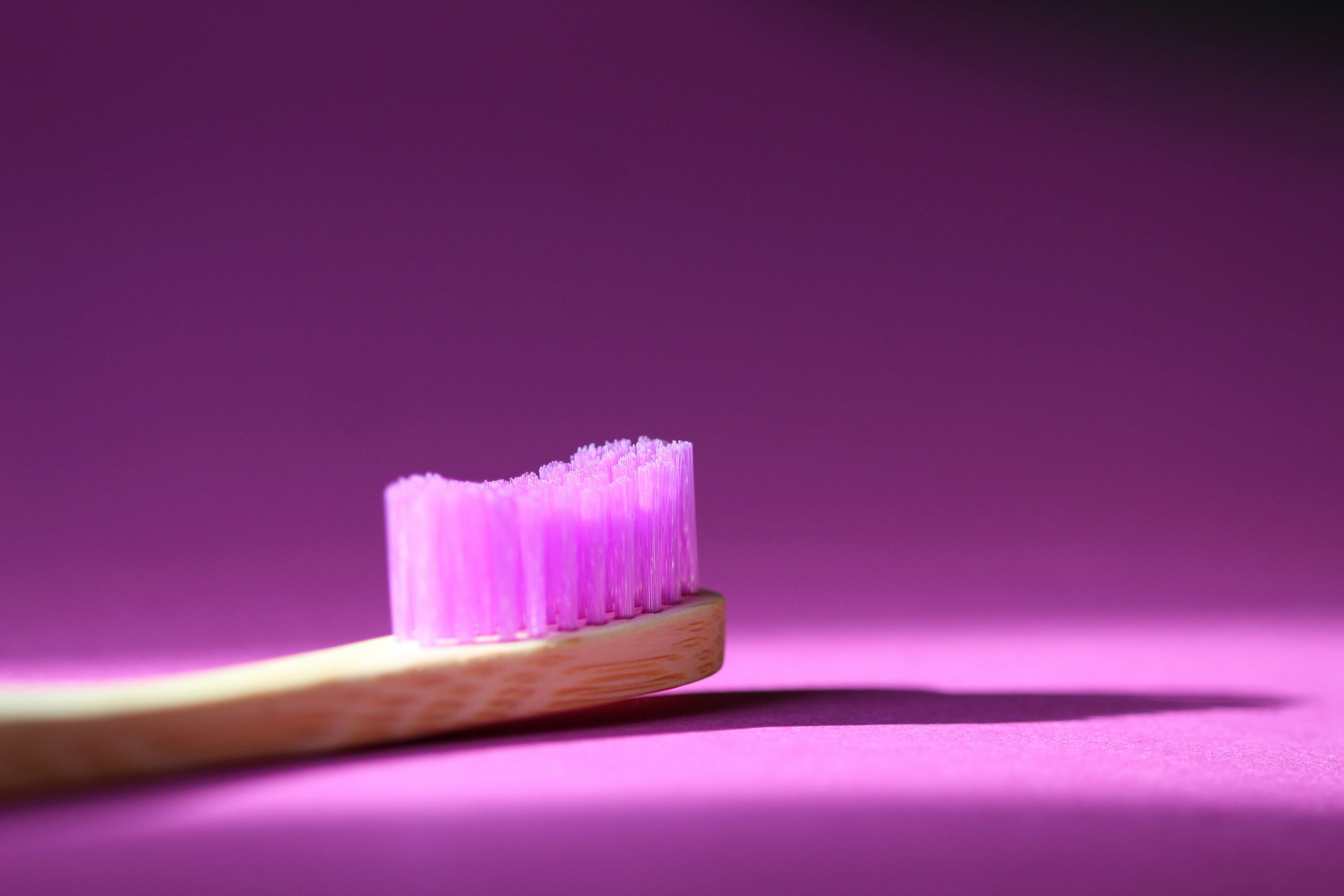Gingivitis is a very common condition affecting the gums. It is a mild form of gum disease that causes bleeding, swelling, discoloration, and pain when touching the gums. If you develop gingivitis, you must visit your dentist soon to prevent it from progressing to a more severe version of the gum disease called periodontitis.
According to the Centers for Disease Control and Prevention (CDC), gingivitis is very common among adults in the United States. Gum diseases affect 47.2% of Americans over the age of 30. Moreover, a severe form of gum disease (periodontal disease, or periodontitis) affects 70.1% of adults ages 65 years and older.
Gingivitis is a mild form of gum disease and is not considered dangerous. However, if it is not treated, it may progress to a more severe form – periodontitis. Serious cases of periodontitis may cause tooth loss, respiratory diseases, heart issues, and receding gums. It is also linked to some dangerous medical conditions, including diabetes, coronary artery disease, and strokes.
Gingivitis itself is not contagious, but the bacteria that cause it can be spread from person to person through activities such as sharing utensils, kissing, or other forms of close contact.
In many cases, gingivitis develops because of poor oral health, which results in plaque formation on teeth. This, in turn, leads to swelling, irritation, and gum bleeding – a full-fledged gum disease. It develops in three stages: plaque formation, tartar formation, and swelling of gingiva.
Dental plaque![]() is a sticky, colorless film that forms on the teeth. Everyone gets plaque, but it needs to be removed by a dentist occasionally. Regular brushing and flossing are essential activities preventing plaque from causing problems.
is a sticky, colorless film that forms on the teeth. Everyone gets plaque, but it needs to be removed by a dentist occasionally. Regular brushing and flossing are essential activities preventing plaque from causing problems.
If plaque stays on the teeth long enough, it can turn into tartar, also called calculus. It is a hardened form of plaque that is more challenging to remove, providing conditions for bacteria to thrive. It also irritates the gumline, so it needs to be quickly removed before it progresses to gum disease. You can't get rid of tartar by yourself, so visiting a dentist's clinic is necessary.
The gingiva![]() refers to a gum that surrounds the base of the teeth. If not removed, tartar will continue irritating the gingiva, eventually causing swelling and bleeding. At this stage, gingivitis has already developed and may progress to periodontitis.
refers to a gum that surrounds the base of the teeth. If not removed, tartar will continue irritating the gingiva, eventually causing swelling and bleeding. At this stage, gingivitis has already developed and may progress to periodontitis.
Gingivitis can develop in anyone, but several factors, including some medical conditions, drugs, and lifestyle choices, can increase plaque formation or increase the risk of this condition. These include:

If gingivitis is mild, there may be no discomfort or noticeable oral problems. It becomes more problematic if the following issues appear:
Gingivitis may worsen over time, distracting the symptoms and causing more pain. If you start experiencing gum issues, visit a dentist as soon as possible to prevent the condition from progressing and developing complications.
If left untreated, gingivitis can result in a disease that spreads from the gums to underneath tissues and bones![]() , causing periodontitis. This serious gum disease damages bones supporting the teeth. With periodontitis, you are likely to experience more issues with your gums, teeth, and breath and also feel more pain. And in the worst-case scenario, you may lose your teeth.
, causing periodontitis. This serious gum disease damages bones supporting the teeth. With periodontitis, you are likely to experience more issues with your gums, teeth, and breath and also feel more pain. And in the worst-case scenario, you may lose your teeth.
Progressing gum infection may also affect other parts of the body, potentially causing diabetes, respiratory diseases, coronary artery disease, rheumatoid arthritis, or stroke. Researchers think that these medical conditions may develop after the bacteria that causes gum disease enters the bloodstream through gum tissue. The bacteria may eventually affect the lungs, heart, and other organs and tissues. However, more evidence is needed to confirm this link.
Another complication of gingivitis is necrotizing ulcerative gingivitis (NUG), or trench mouth. This is a severe form of gingivitis that may lead to bleeding gums, ulcers, and gum pain – more severe than in the regular form. You are less likely to develop NUG in developed countries. Those who are the most at risk are people living in poor conditions and deprived of vital nutrients.
To determine if you have gingivitis, your dentist will ask about your symptoms and review your medical and dental history. They will also examine your mouth and look for the signs of the disease on your gums, teeth, and tongue, such as swelling, bleeding, irritation, and plaque.
If your dentist suspects periodontitis, they will order a dental X-ray or periodontal probing to check for bone loss, measure pocket depths around a tooth, and see if your jawbone is affected. You may also be referred to a periodontist (a gum disease specialist) for additional guidance.
Gingivitis can usually be treated with medications, dental cleanings, proper oral care at home, and tartar removal procedures, such as planing and scaling. If these methods are ineffective or your case is severe, surgery may be necessary.
A simple dental cleaning may treat gingivitis if it is not advanced. However, keeping the teeth and gums clean after returning home is essential to prevent plaque from forming again. Improved dental hygiene prevents tartar from forming and thus decreases the risk of gingivitis.
If a dental cleaning can't remove plaque, you may need to undergo other dental procedures – scaling and root planning. These techniques are similar to cleaning but can reach places between the gums and remove problematic tartar and bacteria accumulation.
Several types of medications may help you recover faster from gum disease. These include:
Surgical treatments are not needed for gingivitis. However, if gingivitis progresses to periodontitis, they may be necessary![]() . These procedures may include:
. These procedures may include:

You should schedule an appointment with a dentist as soon as you notice the symptoms of gingivitis. The most alarming symptoms are bleeding from the gums, swollen gums, and gum discoloration. Without treatment, they may get worse, causing more pain and potentially leading to complications such as periodontitis and respiratory diseases. Seeking care early will improve the outlook and reduce the risk of additional health problems.
Preventing gingivitis involves following a good oral hygiene routine and adopting a healthy lifestyle. Here are some tips to help prevent gingivitis:

Gingivitis is a common mild gum disease characterized by bleeding, swelling, and pain in the gums. Left untreated, it can progress to periodontitis, a more severe gum disease. According to the CDC, 47.2% of adults over 30 in the United States have gum diseases.
Gingivitis often results from poor oral hygiene, leading to plaque formation on teeth. Plaque can become tartar, irritating the gums and causing swelling, bleeding, and pain.
Dentists diagnose gingivitis based on symptoms, medical history, and examination. In suspected cases of periodontitis, X-rays and periodontal probing may be used to check for bone loss.
Early signs of gingivitis include receding gums, bad breath, gum bleeding, tenderness, pain, swollen gums, and changes in gum color. Without treatment, complications like periodontitis and respiratory health issues may arise.
Treatment involves oral care, dental cleanings, and, if necessary, procedures like scaling and root planing. Medications, including antibiotics and antiseptic mouthwash, may be prescribed. Surgery is usually reserved for severe cases of periodontitis.
You must see a dentist promptly if you experience bleeding or swollen gums, discolored gums, or bad breath. Early treatment improves outcomes and reduces the risk of complications.